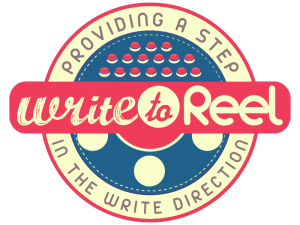An excerpt from my script review for The Outpost which will be available 07/27/20:
4.) Dialogue and Description
This script caused me to nod off twice as I was reading.
Why? The extremely bulky and unorganized description.
Just because it’s standard practice that blocks of description should be five lines or less does not mean you should damn near every entry five lines.
Page 9:
EXT. MOUNTAIN ROAD – NIGHT
Mace, Hardt and Lybert spill from the Humvee – it rolls on
with no driver! They watch it tumble off the cliff. Ahead
SOLDIERS in the Humvees scramble for cover, Afghans abandon
jingle trucks, many instantly mowed down. Bullets slap all
around Mace and Hardt, they dive for cover behind rocks.
I count four separate images there, all of which should be their own entries.
From the same page…
Mace spins, exposes himself to gunfire to unload on the
ridge! Hardt bolts – a barrage rains down, forces him back!
Mace slips on night-vision goggles. MACE’S POV: Eerie, greentinged…
and Lybert’s heat signature – orange, turning to
yellow as the life slowly seeps from him. Mace keys his mike –
Not only are there multiple shots/images in this entry, there’s even a specific character POV which certainly deserves its own line if that’s the angle you’re trying to establish.
And this was just a single page of an overburdened script heavy on action.
The description read like an amateur script, or at least took the “based on” for granted knowing minimal effort would still get shit done.
But I know why they did it. They cheated.
Had every shot been broken out like it was supposed to, this 119 page script would suddenly balloon to over 150 pages or more, and the fact that it’s “based on” will only carry you so far.
So what can you do as an undiscovered writer?
First and foremost, go through and edit out anything and everything that isn’t absolutely necessary. Remember there’s a fun little trick our human brains do when reading.
As an example, there’s no need to show every action from a character leaving a house and entering a car. You simply have him walk towards the door and show him in the car for the next scene.
Our brain fills in the rest.
(Not to mention if absolutely nothing happens in the car you can jump right to the destination, because we only need things that advance the plot!)
Second, remember the notion of “mentally digestible” in that your reader should be able to easily “see” your story in their heads as they read.
(They’re not reading a script, but visualizing a movie.)
To accomplish this, and once you complete the first step, break out the specifics of action sequences into streamlined description entries.
CAR EXPLODES.
CHARACTERS FLEE IN PANIC, NARROWLY ESCAPING DEATH AS–
CAR TUMBLES OFF CLIFF.
Bunching everything up into block after lengthy block of words will do to a reader exactly what this script did to me…cause her to nod off.
(And no need to capitalize everything like I did in the above. That was just to make it stand out for the purpose of this review.)
On the dialogue, there were two notes I jotted down.
Page 45:
KIRK
Can get out of jail. Can’t get
outta bein’ fuckin’ dead.
This single entry of character motivation is what propels the action forward.
Page 64 – Mohammed (the translator) reads a letter left by the Taliban that more or less gives the justification for each and every Holy War we’ve had on this planet since the dawn of time.
“You don’t believe exactly what I believe, therefore God says you must die.”
Want EARLY access to our videos, uploads, and movie/script reviews? Members get them FIRST! Follow this link to our Discussion Forum.





